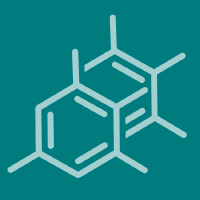Topic Menu
► Topic MenuTopic Editors

Advanced Structural Crystals
Topic Information
Dear Colleagues,
Your excellent work has contributed to much progress that has been achieved these days in the broad field of advanced crystals. This interdisciplinary field spreads across multiple technology branches, covering grown semiconductor monocrystals, e.g., by the Czochralski method, the control of nucleation and crystal growth, advanced crystal engineering, modeling and experimental structure determination via the employment of diffraction-based techniques, and high-throughput computational/experimental screening for specific applications. This vast field includes mostly 3D crystals (porous 3D crystals, e.g., zeolites, MOFs, COFs, and co-crystals/clathrates, as well as non-porous ones). Phase change transformations of such crystals have also found multiple technological applications for energy and gas storage. Other advanced topics include liquid crystals, chiral crystals, photonic crystals, and crystallization/crystals in space. This Topic focuses on the progress in advanced crystals in terms of structure determination and prediction/modeling (density functional theory, molecular dynamics, and machine learning), as well as on the investigation of their technologically relevant characteristics and properties.
Dr. Małgorzata Hołyńska
Dr. Ionut Tranca
Topic Editors
Keywords
- crystal
- crystal structure
- crystal growth
- crystal properties
- crystal engineering
- phase change
- experiment
- crystal modeling (DFT, MD, and ML)
Participating Journals
| Journal Name | Impact Factor | CiteScore | Launched Year | First Decision (median) | APC |
|---|---|---|---|---|---|

Chemistry
|
2.1 | 2.5 | 2019 | 19.1 Days | CHF 1800 |

Compounds
|
- | - | 2021 | 20.6 Days | CHF 1000 |

Crystals
|
2.7 | 3.6 | 2011 | 10.6 Days | CHF 2600 |

Materials
|
3.4 | 5.2 | 2008 | 13.9 Days | CHF 2600 |

Molecules
|
4.6 | 6.7 | 1996 | 14.6 Days | CHF 2700 |

MDPI Topics is cooperating with Preprints.org and has built a direct connection between MDPI journals and Preprints.org. Authors are encouraged to enjoy the benefits by posting a preprint at Preprints.org prior to publication:
- Immediately share your ideas ahead of publication and establish your research priority;
- Protect your idea from being stolen with this time-stamped preprint article;
- Enhance the exposure and impact of your research;
- Receive feedback from your peers in advance;
- Have it indexed in Web of Science (Preprint Citation Index), Google Scholar, Crossref, SHARE, PrePubMed, Scilit and Europe PMC.


